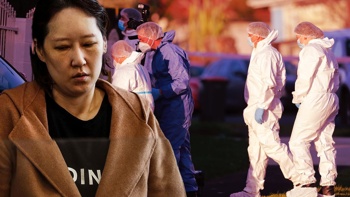Our Christmas time Covid-19 wave has now most likely peaked - but Kiwis should be prepared for another month of higher infection rates before case numbers fall back to where they were, a modeller says.
Covid-19 Modelling Aotearoa’s Dr Dion O’Neale also told the Herald that this subvariant-fuelled wave may have reached a higher peak, had thousands of people not been infected as a direct result of the Government relaxing restrictions back in September.
Another 6124 cases were reported today, while the seven-day rolling average has been hovering around the 6000-mark.
O’Neale expected that, while we’d now “almost certainly” seen the peak in reported cases, “we’re possibly not actually at the peak of infections yet”.
“As we move into Christmas, case reporting will have dropped over the last week, as we expect it to every time we move into public or school holidays, or even by looking at the difference in case reporting between weekends and the start of the week.”
That meant that, while the figures we see issued by the Ministry of Health could begin falling, there’d be many more people catching the virus without knowing, not testing or not reporting their results.
For every one of those reported cases, O’Neale said there will be at least one to two infections being missed.
“To put it simply, right now, things are as dangerous as they’re going to be for a few weeks,” O’Neale said.
“The important thing for people to remember is that, even once numbers start going down, it’s still going to take another three to four weeks before we’re back to lower numbers again.”
O’Neale urged people to stay vigilant, wear masks in poorly-ventilated indoor areas, and stay home and test themselves if they developed symptoms.
“An estimated 30 to 40 per cent of infections are completely asymptomatic, and rapid antigen tests can take a couple of days to turn positive at the start of an infection, even for people with symptoms,” he said.
“If you think you may be infected, either because of symptoms or because you think you were recently exposed, it’s a good idea to keep testing for a few days.”
For those who currently have the virus, but due to end their isolation period before meeting family and friends for Christmas, O’Neale pointed out that about a third of cases remained infectious after seven days.
“Using rapid antigen tests (RATs) at the end of your isolation period is a great way to tell if you are still infectious,” he said.
“After an initial positive test on a RAT, if you’re still testing positive, then you’re almost certainly still infectious.”
Covid-19 Response Minister Ayesha Verrall said the country’s settings would remain unchanged following a final review for the year.
“That includes the retention of seven-day mandatory isolation for positive cases, in order to break the chain of transmission and keep cases and hospitalisations at a manageable level.”
Verrall said people eligible for their booster vaccine should get one now and it wasn’t too late for people who haven’t yet had their first or second dose.
Masks, RATS and vaccines could be accessed for free from thousands of locations across the country, she said.
“With many people travelling around the country over the coming weeks, it’s important that everyone plays their part,” she said.
“Get prepared now so we can all have a safe as summer.”
Earlier this week, the Government released new modelling suggesting hospitalisations could peak at about 1100 in this wave – a figure higher than what we saw in our first two Omicron surges, and partly due to more older people catching the virus for the first time.
O’Neale said this wave had been powered by our “subvariant soup”, with BA.2.75 and its subvariants now accounting for more sequenced samples than the BA.5 strain that drove the winter Omicron wave.
As well, other recently-arrived subvariants like BQ.1.1, and hybrid strains like XBC and XBB, were making up an increasing proportion of cases.
Interestingly, the combined effect of these subvariants might have been greater had Kiwis not been exposed to a smaller wave of infections – mostly BA.5 - that swiftly followed September’s roll-backs.
In the weeks after the Government announced an end to mandatory quarantine for household contacts and masking rules in most settings, along with vaccination and testing requirements at the border, O’Neale and colleagues observed a 20 per cent increase in the growth rate of cases.
They expected about half of that bump was attributable to the policy changes, with the other half of the increase due to people taking a more relaxed approach to the virus as a result.
“No doubt, people took the policy change as a signal that things are safer, so changed their behaviour – and cases went up.”
This peak due to policy and behaviour changes was thought to have topped out with several thousand cases around the middle of November, before subvariants became the primary driver of new infections.
/cloudfront-ap-southeast-2.images.arcpublishing.com/nzme/K3KCWGVT3SKSQN2WUPDEMBUMDA.jpg)
“To put it simply, right now, things are as dangerous as they’re going to be for a few weeks,” Covid-19 modeller Dr Dion O’Neale says. Photo / Supplied
“What the policy change did appear to do was drive up new infections that were mostly BA.5, so then some people went from being previously uninfected and still susceptible to increasing their immunity immediately prior to widespread circulation of these new subvariants.”
O’Neale said that, with so many variables in the mix – and big unknowns about the population’s immunity profile – it was difficult to say just how much of a blunting effect this “pre-wave” had.
But he nonetheless expected it had changed the timing of this Christmas wave, and its size.
“Ultimately, it meant that we didn’t see the clear effect of these new variants until later, because it was hidden under cases that were increasing because of behaviour changes.”
Take your Radio, Podcasts and Music with you









